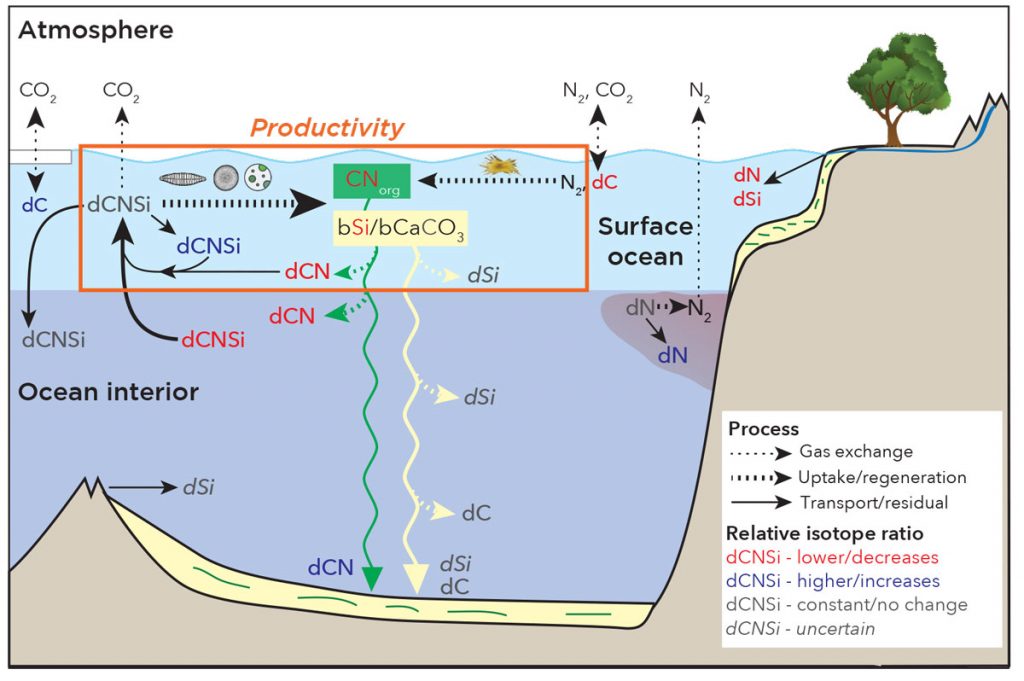Pros and cons of carbon, nitrogen and silicon as tracers of modern and paleo-productivity
Farmer and co-authors (2021, see reference below) review the geochemical proxies based upon sedimentary isotope ratios of three abundant biologically mediated elements: carbon (C), nitrogen (N), and silicon (Si), commonly used as productivity tracers. Their paleo-applications are informed by recent improvements to the understanding of ocean element and isotopic distributions thanks to the GEOTRACES and other hydrographic data. The pros and cons of the 3 elements as productivity tracers are discussed by the authors. They underline that, for instance:
- carbon isotopes will not only change with the surface biological productivity but also circulation, air-sea gas exchange, upwelling, and mixing of water masses with different signatures (non-productivity processes);
- regarding nitrate, using isotopic (δ15N) measurements in sedimentary archives to reconstruct past nitrate utilization requires that changes in the subsurface and any other source nitrate isotopes (δ15N) are quantified or assumed constant, and that the supply of nitrate to the surface layer has also not changed over time (non-productivity processes again);
- silicon isotope ratios (δ30Si) will reflect the productivity of silicifiers but not necessarily total productivity, as these two processes could be decoupled.
The authors then discuss the carbon, nitrogen and silicon isotope (δ13C, δ15N, and δ30Si) proxy applications linking ocean nutrient and carbon cycling with atmospheric dioxide carbon partial pressure (pCO2) over the last glacial-interglacial climates as well as the whole Cenozoic. Authors underline that:
- multiproxy applications minimize the potential bias of the non-productivity processes, and provide novel insights gained by concurrent inferences on the uptake of carbon and major nutrients;
- the expansion of C, N and Si isotope proxies to the Cenozoic should greatly improve understanding of long-term C, N, and Si cycles and their coupling to Earth’s climate.

This synthesis paper results from the joint GEOTRACES-PAGES workshop (Aix en Provence, France, December 2018). Please also read the science highlight from the Horner et al. paper “Bioactive trace metals and their isotopes as paleoproductivity proxies: An assessment using GEOTRACES‐era data” also resulting from this workshop.
Reference:
Farmer, J. R., Hertzberg, J. E., Cardinal, D., Fietz, S., Hendry, K., Jaccard, S. L., Paytan, A., Rafter, P. A., Ren, H., Somes, C. J., Sutton, J. N. (2021). Assessment of C, N and Si isotopes as tracers of past ocean nutrient and carbon cycling. Global Biogeochemical Cycles, e2020GB006775. https://doi.org/10.1029/2020GB006775
